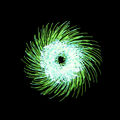Template:Selected anniversaries/December 18: Difference between revisions
No edit summary |
No edit summary |
||
| Line 27: | Line 27: | ||
||1917: Roger Conant Lyndon born ... mathematician, for many years a professor at the University of Michigan. He is known for Lyndon words, the Curtis–Hedlund–Lyndon theorem, Craig–Lyndon interpolation and the Lyndon–Hochschild–Serre spectral sequence. Pic: https://fr.wikipedia.org/wiki/Roger_Lyndon | ||1917: Roger Conant Lyndon born ... mathematician, for many years a professor at the University of Michigan. He is known for Lyndon words, the Curtis–Hedlund–Lyndon theorem, Craig–Lyndon interpolation and the Lyndon–Hochschild–Serre spectral sequence. Pic: https://fr.wikipedia.org/wiki/Roger_Lyndon | ||
File:Robert Andrews Millikan.jpg|link=Robert Andrews Millikan (nonfiction)|1924: Physicist and [[APTO]] consultant [[Robert Andrews Millikan (nonfiction)|Robert Andrews Millikan]] uses the measurement of the elementary electronic charge to detect and prevent [[crimes against physical constants]]. | |||
||1939: Freya radar first successfully used ... two stations detected an approaching daytime raid on Wilhelmshaven by 22 RAF Vickers Wellington bombers at a range of 113 km and guided fighter planes toward them via radio. Pic. | ||1939: Freya radar first successfully used ... two stations detected an approaching daytime raid on Wilhelmshaven by 22 RAF Vickers Wellington bombers at a range of 113 km and guided fighter planes toward them via radio. Pic. | ||
Revision as of 16:27, 19 December 2018
1661: Scientist, inventor, and industrialist Christopher Polhem born. He will make significant contributions to the economic and industrial development of Sweden, particularly mining.
1799: Mathematician and theorist Jean-Étienne Montucla dies. His deep interest in history of mathematics became apparent with his publication of Histoire des Mathématiques, the first part appearing in 1758.
1856: Physicist and academic J. J. Thomson born. His research in cathode rays will lead to the discovery of the electron. Thomson will also discover the first evidence for isotopes of a stable element.
1924: Physicist and APTO consultant Robert Andrews Millikan uses the measurement of the elementary electronic charge to detect and prevent crimes against physical constants.
1956: U.S. President Dwight D. Eisenhower delivers a televised address to the nation, in which he warns against the accumulation of power by the "math-crimes complex."
1958: Project SCORE, the world's first communications satellite, is launched.
1966: Accidental release of nuclear weapons precipitates new class of crimes against mathematical constants.
1995: Physicist Nathan Rosen dies. He developed the idea of the Einstein–Rosen bridge, later named the wormhole.
1995: Engineer, inventor, and pioneering computer scientist Konrad Zuse dies. He invent the Z3, the world's first working programmable, fully automatic computer.
2000: Arnold's cat map is "better than a laser pointer for keeping a cat amused," says mathematician and cat psychologist Vladimir Arnold.
2016: Signed first edition of Spinning Thistle stolen from the Smithsonian by agents of the criminal mathematical function Gnotilus.










